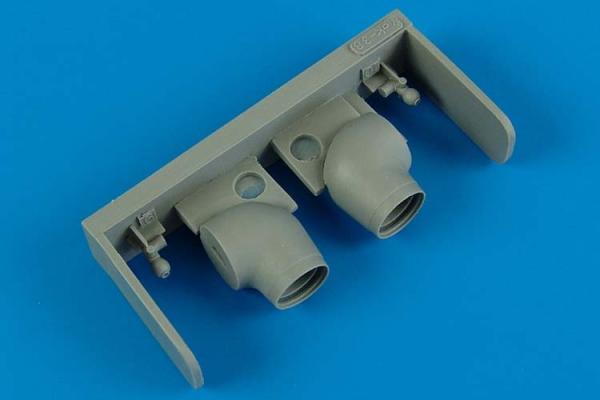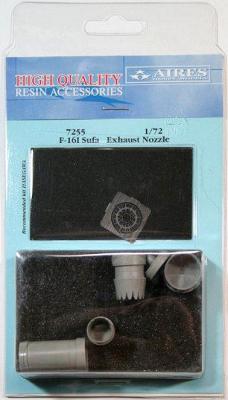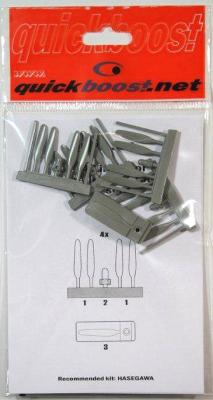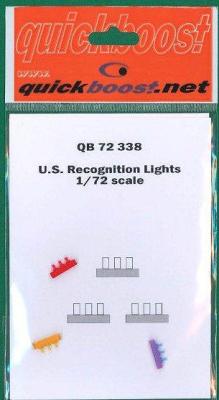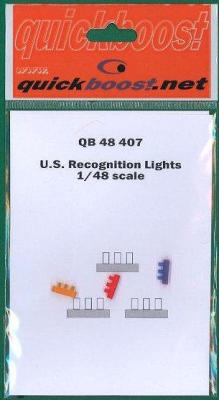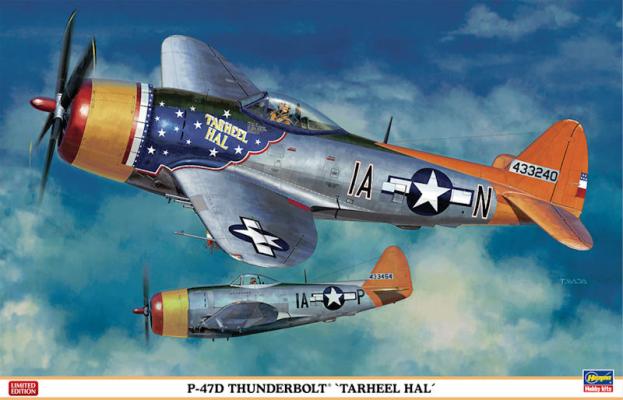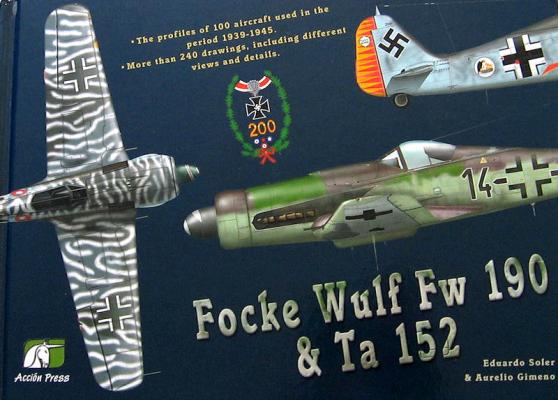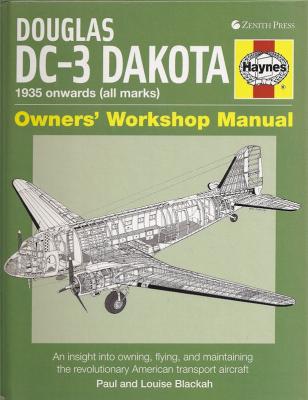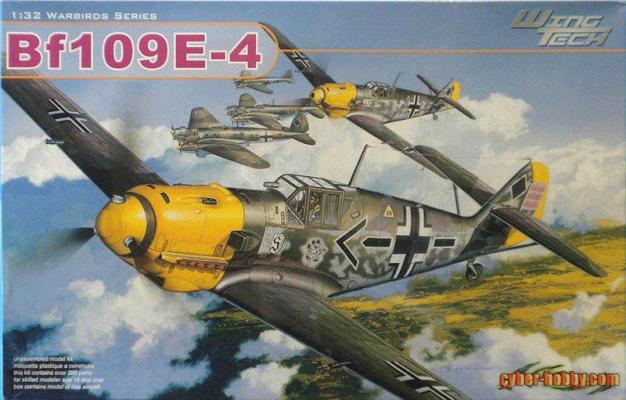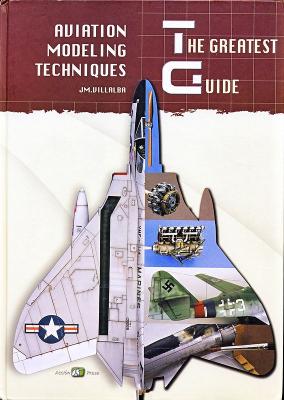First, THANKS goes to David Lajer at Aires for these review items! Aires is a long-time supporter and provider, and we at IPMS USA appreciate this working relationship (…and thanks also to Steve and Dave for allowing me to review the cool stuff!).
Aires is probably the best known provider of resin aftermarket accessories. Well, they’re certainly the most prolific. And I still haven’t figured out how they make the detail so fine. I’d almost swear they have little one-inch tall guys making this stuff. This set is an exhaust for the F-16I Sufa kit from Hasegawa. The set consists of five finely cast resin parts, two to make up the exhaust petals, one for the exhaust chamber, one for the aft compressor blades, one for the engine ring on the fuselage and one photoetched piece to represent the flame holder of the afterburner.
Once again, Quickboost offers us an upgraded set of propellers for a current kit, the Hasegawa B-24 in 1/72 scale. The bag includes four sets of propeller blades and spinner and an alignment tool for assembling the props. Each set of blades and spinner includes four blades, but, of course, you only need three. If you’re like me, you’ll probably appreciate the extra parts (they don’t call me "Ol' Ten Thumbs" for nothing).
As you can see from the attached photos, the hubs provide just that little bit of extra detail over the kit parts. The tool guarantees the blades will be set at the correct angle when you assemble them to the hub.
1/72 model aircraft builders, like 1/48 model aircraft builders, now recognize that not all Quickboost detail parts are grey resin. Some are yellow, red and blue! Among the latest releases from Quickboost are sets of multi-colored aircraft recognition lights. This one, set #QB 72 338, is sized for 1/72 scale models. It includes three sprues; one each of transparent yellow, red and blue resin, which contain three small cylinders that will fit typical bezels found on most 1/72 scale aircraft.
After carefully drilling out the lights that are cast on the underside of an aircraft’s wings or fuselage with a drill bit that matches the diameter of these little castings, just fit each of the cylinders in their corresponding hole and anchor it with a drop of future, epoxy, or superglue. It should make an easy job of enhancing the detail in that area of any kit that does not include clear parts to do the job.
Not all Quickboost parts are grey resin. Some are yellow, red and blue! That’s right…among the latest releases from Quickboost are sets of multi-colored aircraft recognition lights. This one, set #QB 48 407, is sized for 1/48 scale models. It includes three sprues; one each of transparent yellow, red and blue resin, which contain three small cylinders that will fit typical bezels found on most 1/48 scale aircraft.
After carefully drilling out the lights that are cast on the underside of an aircraft’s wings or fuselage with a drill bit that matches the diameter of these little castings, each of the cylinders can be placed in their corresponding hole and anchored with a drop of future, epoxy or superglue. It should make an easy job of enhancing the detail in that area of any kit that does not include clear parts to do the job.
This is a ‘teaser’ or preview of a full-length article to be published in the IPMS/USA Journal and in the IPMS/USA review website at a later date.
Hasegawa’s rendering of the P-47D Bubbletop in 1/32 scale is impressive, both in size as well as in engineering of the kit. It provides you with 169 parts including optional clear parts for an open or closed canopy. Parts are free of flash without ejector pin marks in any external surface. The final size of the completed model is 346 mm length by 392.5 mm wide. You better make sure it will fit your shelf or display case before you buy it.
Some of the best engineering features of this kit include main wing spars and interlocking tabs for the tail surfaces. That would help ensure perfect alignment of the wings and horizontal tail surfaces to the fuselage. In a model with a wingspan of over 1 foot, it is a very nice feature to have.
When I saw this title become available on the list of items up for review, I thought it might be a good title to review since I was currently working on the new Dragon Ta-152C-1/R-14 kit. I was expecting a softbound book similar to what Squadron or Kagero might do. What I received was a beautifully produced hardbound book of very high quality.
There are 136 pages divided into five sections. The first two sections only comprise four pages and are basically an explanation of what the authors have tried to achieve in putting together this book. The next section deals with camouflage and gives a brief outline of the interpretations of RLM colors used in the book. Contained in this section are five pages of printed RLM color swatches, including two pages of grayscale renditions of the colors. An interesting feature of the swatches is the inclusion of a section that shows each color with highlight and shadow effects.
History
The Douglas DC-3, with its numerous aliases, was probably the most famous and influential transport airplane ever made, and a case can be made for even more praise than that. First appearing in the mid-thirties, it became standard equipment for nearly all major airlines until the outbreak of World War II, and then the plane was mass-produced in very large numbers as a military transport. It was also produced in the Soviet Union and in Japan. DC-3s were very common sights at airports postwar as they continued in airline and corporate service for many years, and many are still flying throughout the world. A current aviation enthusiast who is unfamiliar with the DC-3 has to be a rare breed, as the plane is still famous today.
If asked to name a fighter aircraft that served in WWII, most everyone will mention Messerschmitt before they begin counting on their second hand, and they generally are referring to the Bf 109. The Bf 109 actually earned its iconic position in the late 1930s, when the E model entered service with the Legion Condor in Spain, and then went on to etch its place firmly in history during the Battle of France and Battle of Britain. It’s no surprise, then, that the E has been marketed in all popular scales by almost every plastic model kit manufacturer. Now Cyber Hobby (AKA Dragon) has added one more to the list of kits to choose from when interested in building a Bf 109 in 1/32 scale.
Review author’s note: I had difficulty finding this book on any US web site. It may be too new or only available in Europe. The MSRP is an approximation calculated from the MSRP in Euros with a W.A.G. factor added.
This book is the English translation of the original Spanish version. It is well translated but I did find several odd things which were easy enough to figure out. The publication consists of 8 chapters and a gallery of photos from people who are obviously master modelers to illustrate what can be accomplished with patience, skill, and technique.

